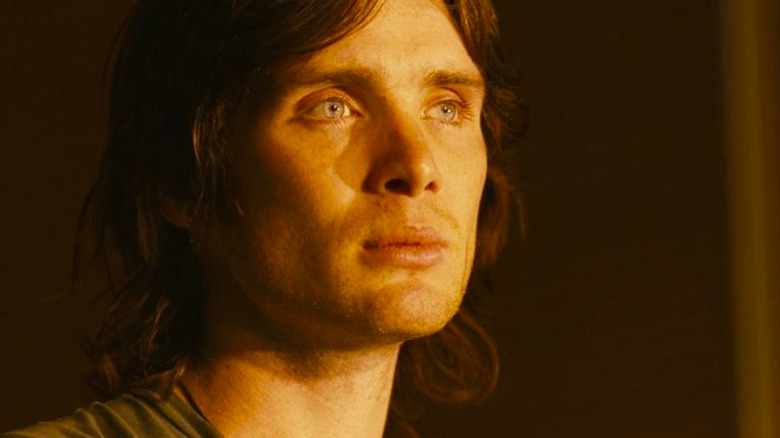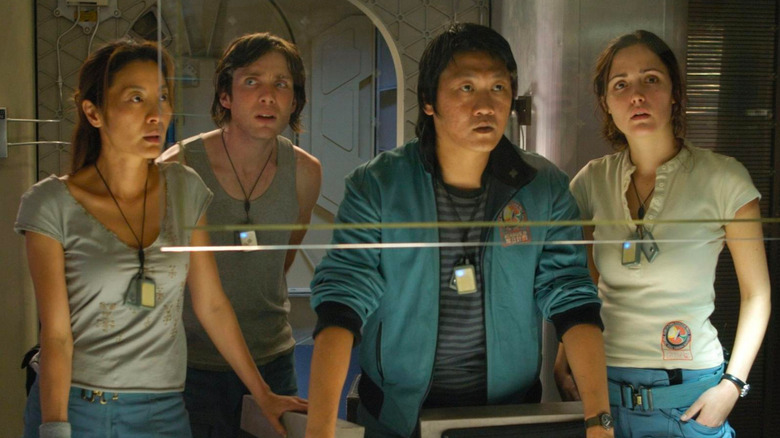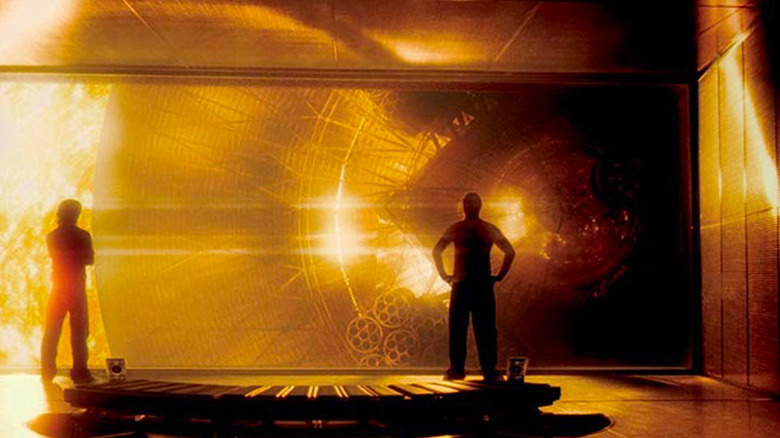Danny Boyle Spent A Lot Of Sunshine's Budget On Avoiding CGI's Biggest Pitfalls
Danny Boyle's "Sunshine" got a lot of flack back in 2007. While it may start as a promising sci-fi slow burn about a group of astronauts on a mission to reignite the sun, it takes a sharp turn into much wackier territory by its end. That said, there are still those of us who can appreciate "Sunshine" — and Boyle — for taking such big swings, especially when a lot of the film is rooted in some really interesting science. Boyle was incredibly committed to telling a "hardcore" sci-fi story and equally keen on getting the most authentic work out of his cast.
To get into the headspace of astronauts far from home, the cast lived and rehearsed together in close quarters for months, conferred with real-life astronauts, and even tested out a few zero-gravity space programs. The latter, according to Boyle, was an instrumental bit of the process. "If you ever have three grand to spare, I can't think of a better way to spend it," the filmmaker told Wired News. "It absolutely changes you."
Preparing his cast psychologically for their fictional journey was only half the battle, especially when it came to the budget. Boyle spent even more to avoid one of the worst sci-fi pitfalls of all — that of actors "reacting" to CGI.
Real effects, real reactions
When it came down to creating effects for "Sunshine," Danny Boyle was adamant about avoiding green and blue screens whenever possible. As technology has advanced, it's become easier to neglect more practical effects in favor of CGI — but it's become a blessing and a curse, especially for the actors who need to react to their surroundings.
"I didn't want this to be a green-screen or blue-screen film, to have the actors looking at a blank screen that would be replaced months later by some astonishing effect that they weren't aware of and therefore couldn't react to. I wanted to make sure that everyone understood what they were looking at, that they'd see something that would allow them to act accordingly."
The director's solution was to create and project those effects during the scenes, solely for the actors' reactions. "We spent a lot of money on stuff that was never going to be seen," Boyle explained, much to the chagrin of those behind the scenes:
"People said, 'You are just wasting money. It'll all get replaced by CG.' I said, 'I know it's going to be replaced. It's not there because I don't know what I'm doing. It's there to make the actors experience it.' My fear with CG is that actors look bored or they overact, that they can't find where to pitch it. I think our approach makes the CG feel organic to the film, instead of a late arrival hitched on."
'Do you believe?'
The interactive CGI elements might not have felt necessary to others, but they're a subtle effect that helps to ground the film and bring great performances out of each actor. Boyle is compelled by one crucial question that fuels many of his decisions on set: "All realism is based on the question: 'Do you believe that actor? Do you believe that moment?'" The director explained. "It's simple as that for me, whether you are dealing with drug addicts in 'Trainspotting' or an incredibly sophisticated mission to the stars. It's the same benchmark, really: 'Do you believe?'"
Not every element of "Sunshine" works perfectly. It has an endearing obsession with the sun and a wild slasher element that makes a mess of the film's third act. Yet, with Boyle's incredible cast and diligent attention to detail, it's not that difficult to believe that any of it could happen — or at the very least, that each character is reacting authentically to every moment.


